04.04.2024
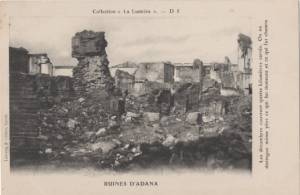
The massacres that took place in the Adana and Aleppo provinces in April 1909 were the second stage of the organised massacres and mass killings of Armenians in the Ottoman Empire. It appeared in the city of Adana and the surrounding areas in all its inhumanity and brutality and happened several months after the Young Turk coup, coinciding with a counter-revolution carried out by supporters of Sultan Abdul Hamid II. The Adana massacres clearly showed that, in this sense and despite the change of Turkish regimes and mutual internal disagreements, the policies adopted to solve the Armenian question and dealing with Armenians remained unchanged.
The Adana massacres began on April 1, when a previously prepared and armed Turkish mob rushed into the city's streets, squares, and neighbourhoods and began massacring Armenians. The first wave of massacres lasted for three days. They resumed on April 12, continuing for a further two days. The Turkish army, although it allegedly arrived at that time to “restore order and the rule of law” also participated in the massacres alongside the mob.
About 30,000 Armenians were killed, with dozens of Armenian-inhabited towns and villages, churches and schools being set on fire and destroyed. Since the main method of massacre was arson, contemporaries described what happened in Adana as a holocaust - arson. Many articles were published in the European press crying out against the brutal policy used against the Armenians.
The Young Turks, in order to avoid responsibility and change international public opinion, started a formal investigation, but the organisers and those responsible for the massacres remained unpunished.
The photograph is of a postcard of burnt and destroyed Adana taken in 1909,
Armenian Genocide Museum-Institute.
Exclusive materials on the Adana massacres kept in AGMI scientific collections are shown below.
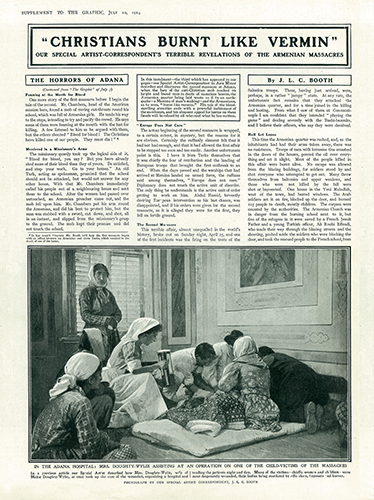
The Graphic, 10 July, London, 1909.
An article titled “Christians Burnt like Vermin: The Horrors of Adana” and
a photograph with the caption “At the Adana hospital. Mrs. Dottie Wiley helps a child injured in the massacre”.
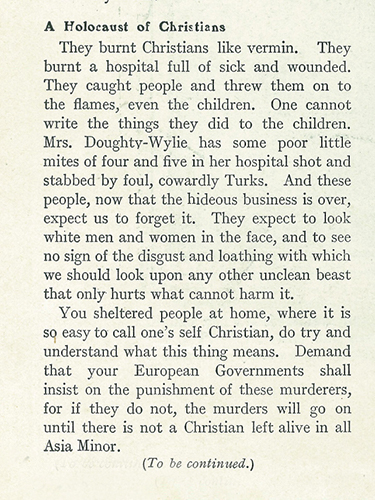
The Graphic, 10 July, London, 1909.
Article titled “A Holocaust of Christians”.
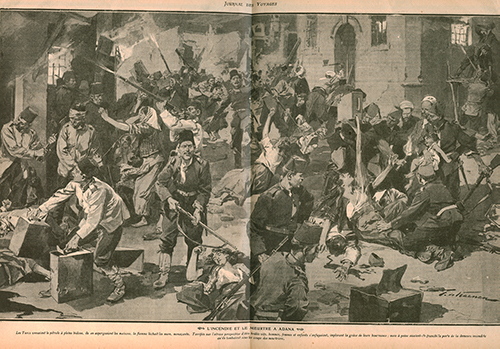
Journal des Voyages, 24 octobre, Paris, 1909.
A picture with the caption “Fire and killing in Adana” shows a Turkish mob pouring fuel even on women and children to set them on fire.
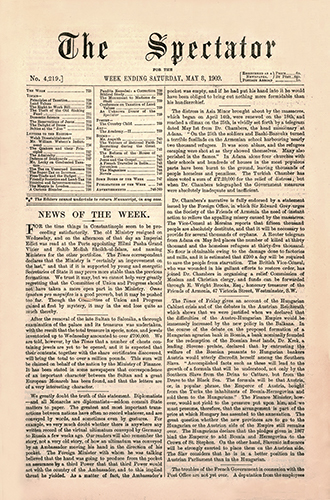
The Spectator, 8 May, London, 1909.
The “News of the week” column states that 30,000 people have been killed and 35,000 left homeless, according to reports from Adana.
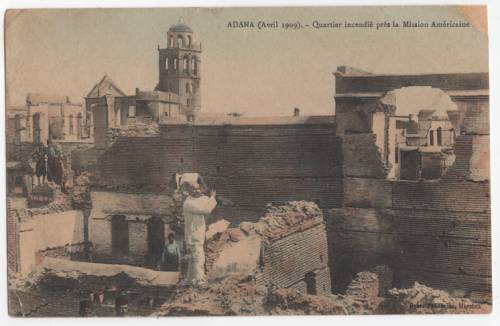
A postcard depicting burnt and destroyed Adana, 1909.
Armenian Genocide Museum-Institute





